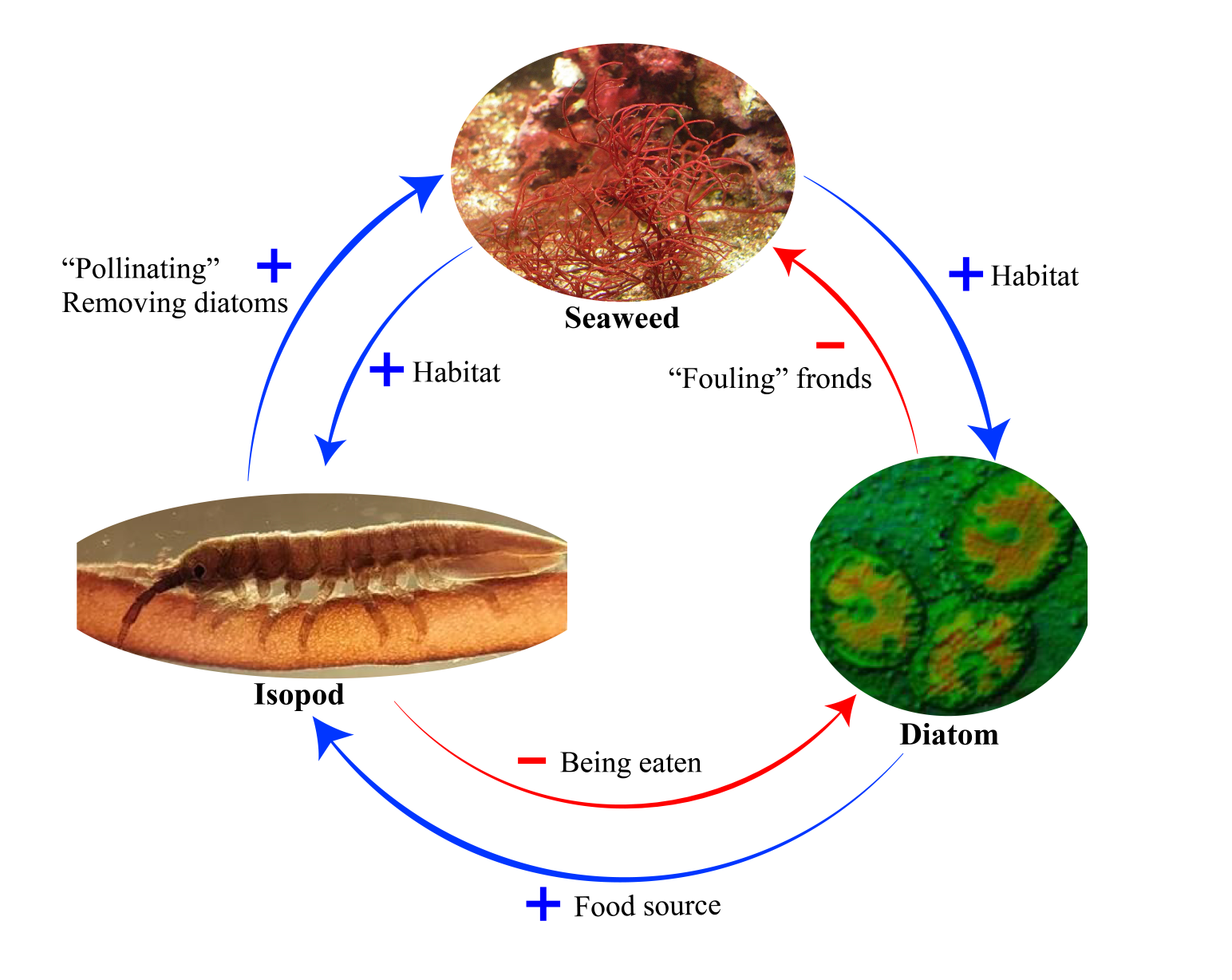
Pollination is the transfer of pollen (containing male gametes of a plant) to a receptive stigma of a flower, which then fertilizes the ovules (containing female gametes or eggs of a plant) for the production of seeds. It is estimated that about 90% of angiosperms (flowering plants) are pollinated by animals. Strictly speaking, pollination is restricted to seed plants, including angiosperms and gymnosperms (e.g., conifers and cycads, etc.).
In addition to occurring on land, animal pollination has been found in the oceans—specifically, in the seagrass Thalassia testudinum, a marine angiosperm.
More broadly, the process of transferring male gametes to female gametes also occurs in other green plants and in eukaryotes such as mosses, fungi, and algae.
Red seaweeds (a type of algae) comprise more than 7,000 species in the ocean. Unlike other seaweeds, their male gametes do not possess a flagella and so are not motile, making them similar to pollen grains. Fertilization takes place on a remote female organ, indicating that these red seaweeds require either water currents or animals to transfer male gametes for sexual reproduction.
Red seaweeds are thought to have evolved around 1.2 billion years ago, long before land plants appeared. Isopods only appeared about 300 million years ago. While isopods and red seaweeds have had a long time to evolve their "pollination" relationship, it is unclear how red seaweeds were fertilized prior to isopods. Extinct marine invertebrates may have done the job, but the earliest arthropods only appeared 600 million years ago.
Isopod crustaceans may be attracted to these seaweeds because they provide shelter from predators. Amidst the seaweed, isopod crustaceans feed on small algae (diatoms) that colonize the seaweed’s surface. Since diatom algae may foul seaweed fronds, removal of these diatoms by isopods may consequently increase the seaweed growth rate.
Isopod crustaceans pollinate the seaweed as they forage and move between fronds. Therefore, isopods are engaged in a "double mutualism" with the seaweed, according to Lavaut.
The reliance on an animal vector to ensure reproduction is highly risky in a world of rapid anthropogenic change. Most reproduction in red seaweeds occurs in relatively still waters found in coastal rock pools at low tide. These habitats are threatened by pollution, invasive species, physical modification of coastlines, and changing climate and sea levels.
In addition, crustaceans in general may be susceptible to increasing ocean acidification related to rising CO2 levels because acid decalcifies their exoskeletons. However, at the same time, red seaweeds such as Gracilaria are ecologically important to their ecosystems and are being touted as a globally sustainable food source.
Unfortunately, an entirely new class of ecological interactions as show in this find may already be threatened even before scientists fully understand them.
This work was funded by the Strategic Priority Research Program of CAS and the President’s International Fellowship Initiative of CAS.

The complex interactions, and their outcomes, between the seaweed (Gracilaria gracilis), isopods (Idotea balthica) and diatoms. A plus sign (+) indicates a positive effect of one species on another, while a minus sign (-) indicates a negative impact. (Images from Lavaut et al. & Emoody26)

86-10-68597521 (day)
86-10-68597289 (night)

52 Sanlihe Rd., Xicheng District,
Beijing, China (100864)

